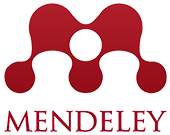TINGKAT STRES MAHASISWA DALAM PEMBELAJARAN ONLINE PADA MASA PANDEMI COVID-19
Abstract
This study aims to obtain an overview of the stress levels of students in facing online learning during the Covid-19 Pandemic. This research method using quantitative descriptive. The data collection method was carried out by distributing questionnaires using a Likert scale. This research was conducted on students majoring in Guidance and Counseling, Faculty of Teacher Training and Education, Sultan Ageng Tirtayasa University with a population of 112 people. The data analysis process of this research is quantitative descriptive with the SPSS for windows version 12 program, obtained reliability results of 0.780 analysis of the normality test technique using the Kolmorgrov-Smirnov significant value of 0.424 data with normal distribution. In general, subjects have a moderate stress level (96.4%).
Keywords:stress level, online learning, covid-19 pandemic
Keywords
Full Text:
PDFReferences
Azwar, Saifuddin. 2001. Metodologi Penelitian. Yogyakarta: Pustaka Pelajar
______________. 2005. Reliabilitas dan Validitas. Yogyakarta: Pustaka Pelajar
______________. 2008. Penyusunan Skala Psikologi. Yogyakarta: Pustaka Pelajar
Djuwari. 2008. Pergeseran Nilai-nilai Pedagogis. (On-Line). Diambil tanggal Agustus 2020 dari http://www.surya.co.id
Direktorat Pembinaan Sekolah Menengah Atas. 2006. Pedoman Penyusunan Bahan Ajar. Jakarta : Lukmana, Direktorat Pembinaan Sekolah Menengah Atas
Gikas, J., & Grant, M. M. (2013). Mobile computing devices in higher education: Student
perspectives on learning with cellphones, smartphones & social media. Internet and Higher Education. https://doi.org/10.1016/j.iheduc.2013.06.002
Iftakhar, S. (2016). GOOGLE CLASSROOM: WHAT WORKS AND HOW? Journal of Education and Social Sciences.
Iswinarti dan Rahayu Siti. 1999. Tingkat Stress dan Prestasi Belajar Anak Usia Sekolah ang memperoleh Pengaayaan. Jurnal Psikodinamik, Volume 1, Nomer 3
Korucu, A. T., & Alkan, A. (2011). Differences between m-learning (mobile learning) and elearning, basic terminology and usage of m-learning in education. Procedia - Social andBehavioral Sciences. https://doi.org/10.1016/j.sbspro.2011.04.029
Kumar, V., & Nanda, P. (2018). Social Media in Higher Education. International Journal ofInformation and Communication Technology Education.https://doi.org/10.4018/ijicte.2019010107
Looker, T & Gregson. O. 2004. Managing Stress: Mengatasi Stress secara Mandiri. Yogyakarta: Baca
Moore, J. L., Dickson-Deane, C., & Galyen, K. (2011). E-Learning, online learning, anddistance learning environments: Are they the same? Internet and Higher Education. https://doi.org/10.1016/j.iheduc.2010.10.001
Needlman.R. (2004). Adolesence Stress. http://www.drscpock.co./article/0.1510.7961.00html (On-Line)
Sicat, A. S. (2015). Enhancing College Students’ Proficiency in Business Writing Via
Schoology. International Journal of Education and Research
So, S. (2016). Mobile instant messaging support for teaching and learning in higher education. Internet and Higher Education. https://doi.org/10.1016/j.iheduc.2016.06.001
Sarfino & Smith. (2012). Health Pschology: Biopsyhosocial Interaction jhon Wiley & Sons Inc.
Siahaan, Sudirman.2002.”Studi penjajagan tentang Kemungkinan Pemanfaatan Internet Pembelajaran di SLTA di Wilayah Jakarta dan Sekitarnya” dalam Jurnal Pendiidkan dan Kebudayaan, Tahun ke-8, No.039, November 2002 Jakarta: Badan Penelitian dan Pengembangan Departemen Pendidikan Nasional
Yandwiputra, A. R. (n.d.). Kuliah Jarak Jauh karena Virus Corona, UI: Bukan Lockdown.
Retrieved from https://metro.tempo.co/read/1319537/kuliah-jarak-jauh-karenaviruscorona-ui-bukan-lockdown
Onno W. Purbo. (2002). Teknologi E-learning Berbasis PHP dan MySQL. Diaksesdari http://id.wikipedia.org/wiki/Pembelajaran_elektronik pada tanggal 23 Juni 2014.
Zhang, D., Zhao, J. L., Zhou, L., & Nunamaker, J. F. (2004). Can e-learning replace classroom learning? Communications of the ACM. https://doi.org/10.1145/986213.986216
DOI: http://dx.doi.org/10.30870/jpbk.v5i2.10108
Refbacks
- There are currently no refbacks.
Indexed By

.png)









1.png)